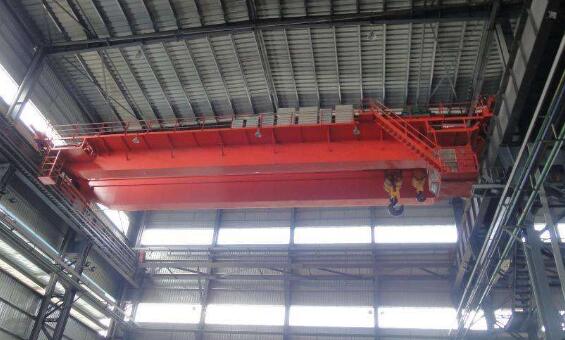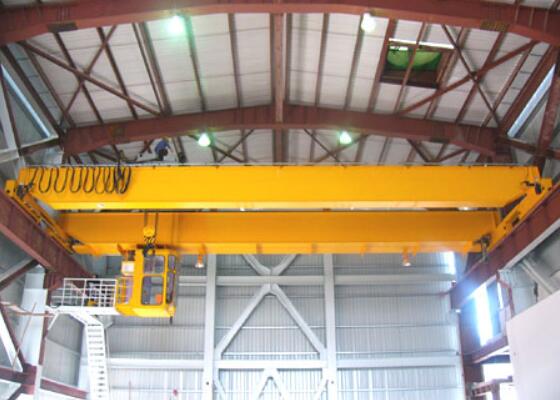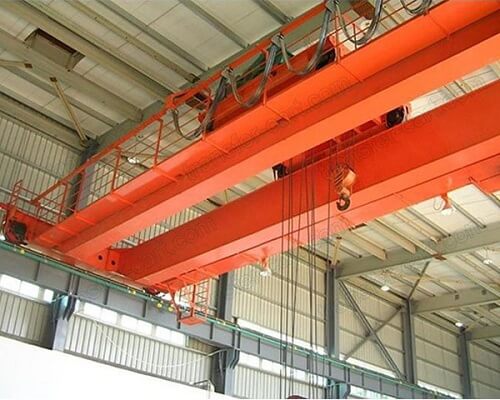The 50-ton overhead crane is a powerhouse of strength and precision, designed to handle substantial loads in industrial settings. With its impressive capacity, this crane plays a vital role in various industries, including manufacturing, construction, and heavy infrastructure projects. In this article, we will explore the basic introduction of a 50-ton overhead crane, delve into its smart features, outline the safe operation steps, and emphasize the importance of regular maintenance.
A 50-ton overhead crane is a heavy-duty lifting device that operates on an elevated runway system. It consists of a bridge, end trucks, hoist trolley, and lifting mechanism. The bridge traverses along the runway, while the hoist trolley moves across the bridge, providing precise control and maneuverability during lifting operations. This crane is typically powered by electric motors, ensuring smooth and efficient operation.

Smart Features of the Overhead Crane
The advancement of technology has introduced several intelligent features in modern 50 ton overhead cranes, enhancing their performance, efficiency, and safety. Let’s explore some notable smart features:
Load Monitoring Systems: These systems provide real-time feedback on the load being lifted, enabling operators to ensure that the crane operates within safe load limits and prevent overloading.
Variable Speed Control: This feature allows operators to adjust the lifting and traversing speeds to match the load requirements, providing greater control and minimizing the risk of load swing.
Collision Avoidance Systems: Some overhead cranes are equipped with collision avoidance systems that utilize sensors and cameras to detect obstacles or other cranes in the vicinity. These systems provide alerts and automatically apply brakes or adjust movements to prevent collisions.
Remote Control Operation: Remote control capabilities enable operators to control the crane from a safe distance, optimizing visibility and reducing the risk of accidents during critical lifting operations.
50 ton overhead cranes are generally double girder overhead cranes due to its large capacity. Double girder designs are more reliable and safe for the 50 ton lifting capacity.

Safe Operation Steps
Operating a 50-ton overhead crane requires adherence to strict safety protocols. Here are some essential steps for safe crane operation:
- Operator Training: Only trained and authorized personnel should operate the overhead crane. Operators must receive comprehensive training to understand the equipment, its controls, and safe operating procedures.
- Pre-Operational Checks: Before each shift, perform thorough inspections of the crane, including structural components, wire ropes, hooks, and safety devices. Identify any signs of wear, damage, or malfunction that could compromise safety.
- Load Capacity: Determine the weight of the load accurately and ensure it falls within the crane’s specified load capacity. Exceeding the crane’s capacity can lead to equipment failure and dangerous situations.
- Rigging and Lifting Procedures: Properly rig and secure the load using appropriate slings, hooks, and attachments. Ensure the load is balanced and stable before lifting. Follow safe lifting procedures, including smooth acceleration and deceleration to minimize load swing.
- Communication: Establish clear communication channels between the crane operator and signal persons or ground personnel. Use standardized hand signals or two-way radios to ensure effective communication during lifting operations.

Crane Maintenance
Regular maintenance is crucial to ensure the optimal performance and longevity of a 50-ton overhead crane. Consider the following maintenance practices:
Lubrication: Regularly lubricate moving parts, such as gears, bearings, and wire ropes, as per the manufacturer’s recommendations. Proper lubrication minimizes friction, reduces wear, and ensures smooth crane operation.
Inspections: Conduct periodic inspections of critical components, including wire ropes, hooks, brakes, and electrical systems. Identify and address any signs of wear, corrosion, or damage promptly.
Electrical System Maintenance: Inspect electrical connections, wiring, and control panels for any signs of damage or overheating. Keep the electrical components clean and ensure they are functioning properly.
Calibration and Testing: Periodically calibrate load monitoring systems, limit switches, and other safety devices to ensure accurate operation. Test emergency stop systems and control functions to verify their reliability.
Documentation: Maintain detailed records of maintenance activities, including inspections, repairs, and component replacements. This documentation helps track maintenance history and identify potential issues.
The 50-ton overhead crane is a formidable piece of equipment, offering strength, precision, and safety for heavy lifting operations. Its smart features enable advanced control, improved efficiency, and collision prevention. Adhering to safe operation steps, including proper training, pre-operational checks, and load management, is vital to ensure the well-being of personnel and the integrity of the crane. Regular maintenance, encompassing lubrication, inspections, and calibration, guarantees optimal performance and extends the crane’s service life. By following these guidelines, industries can harness the power of a 50-ton overhead crane while prioritizing safety and productivity. Get more details about different kinds of cranes from here ellsencranes.com.